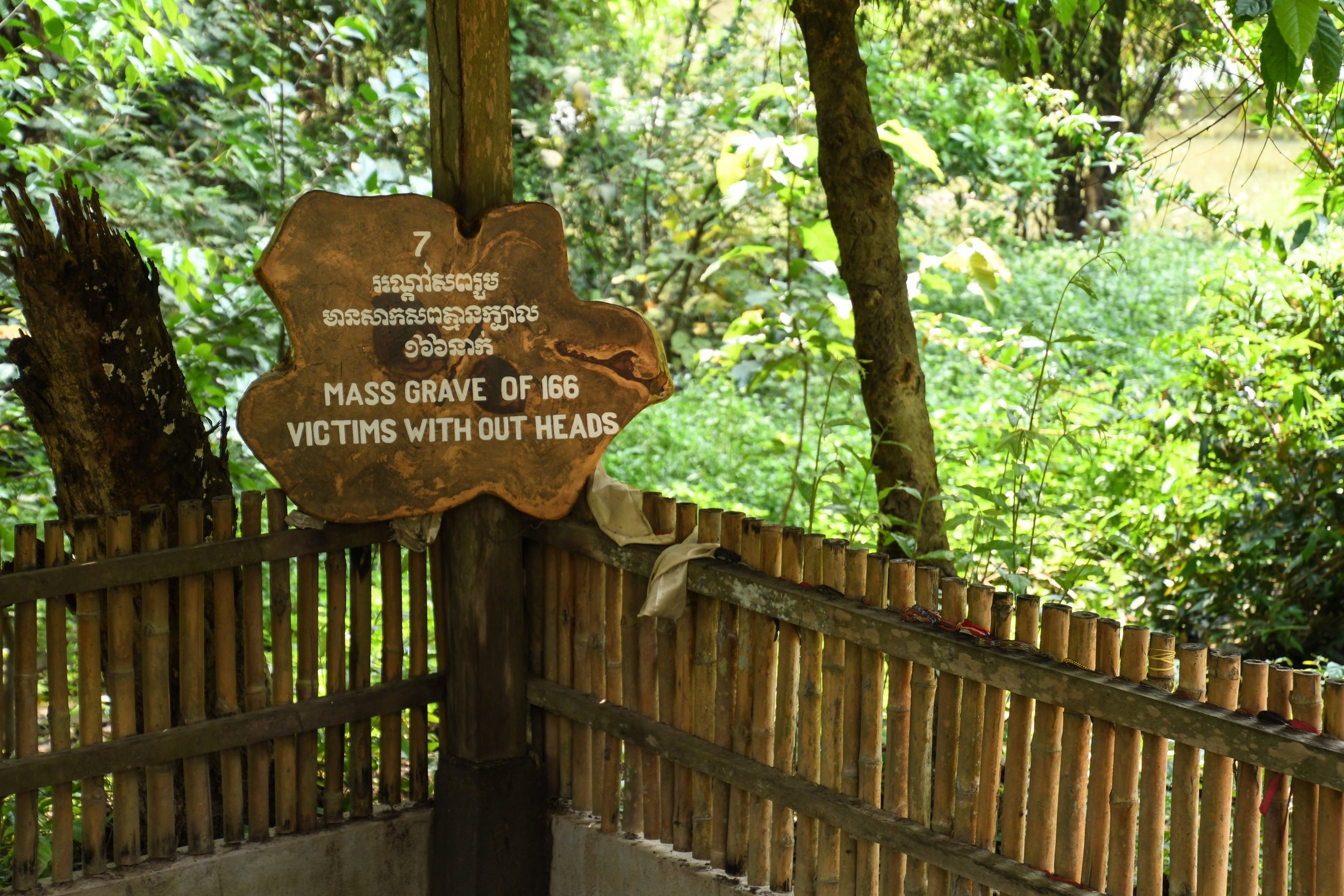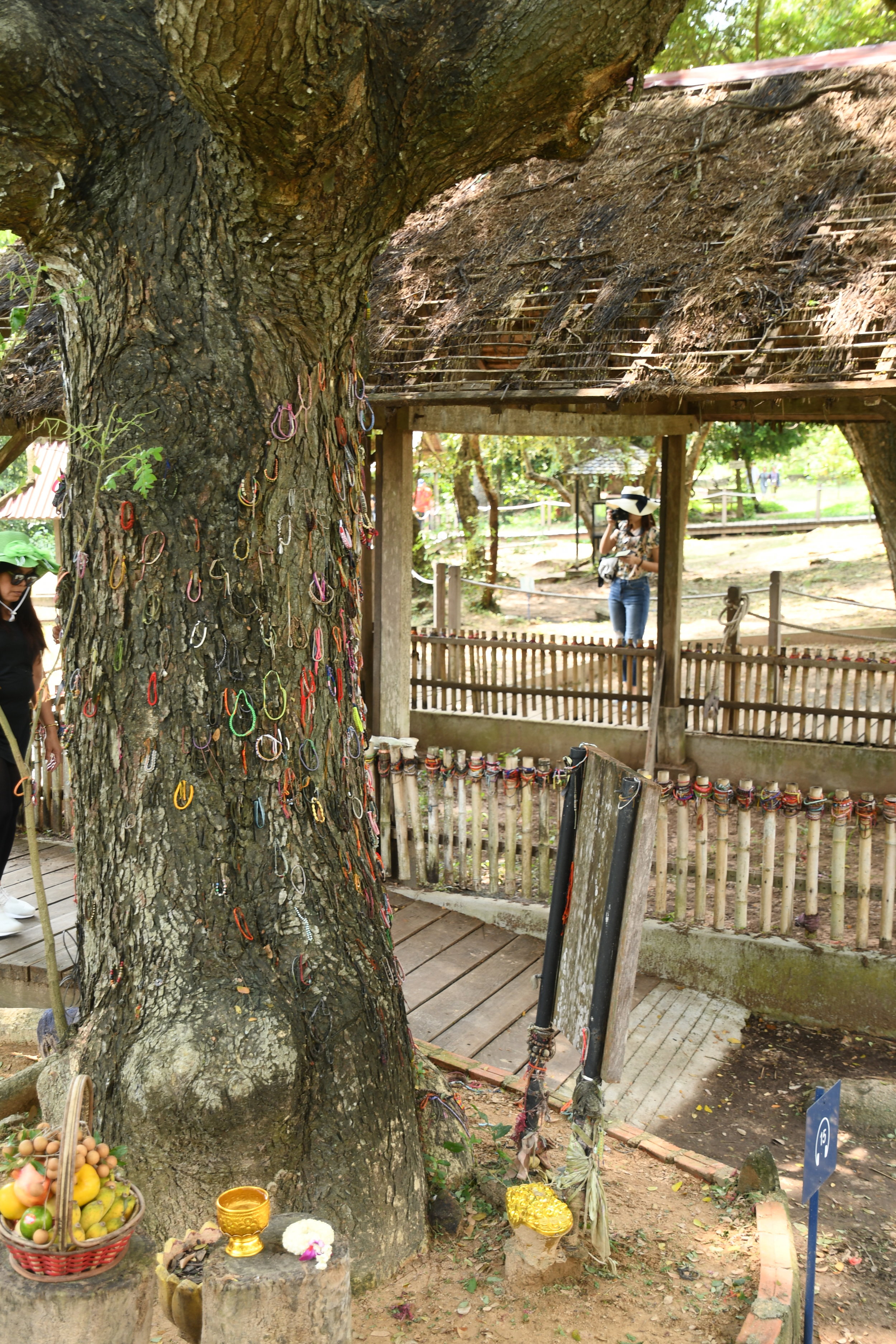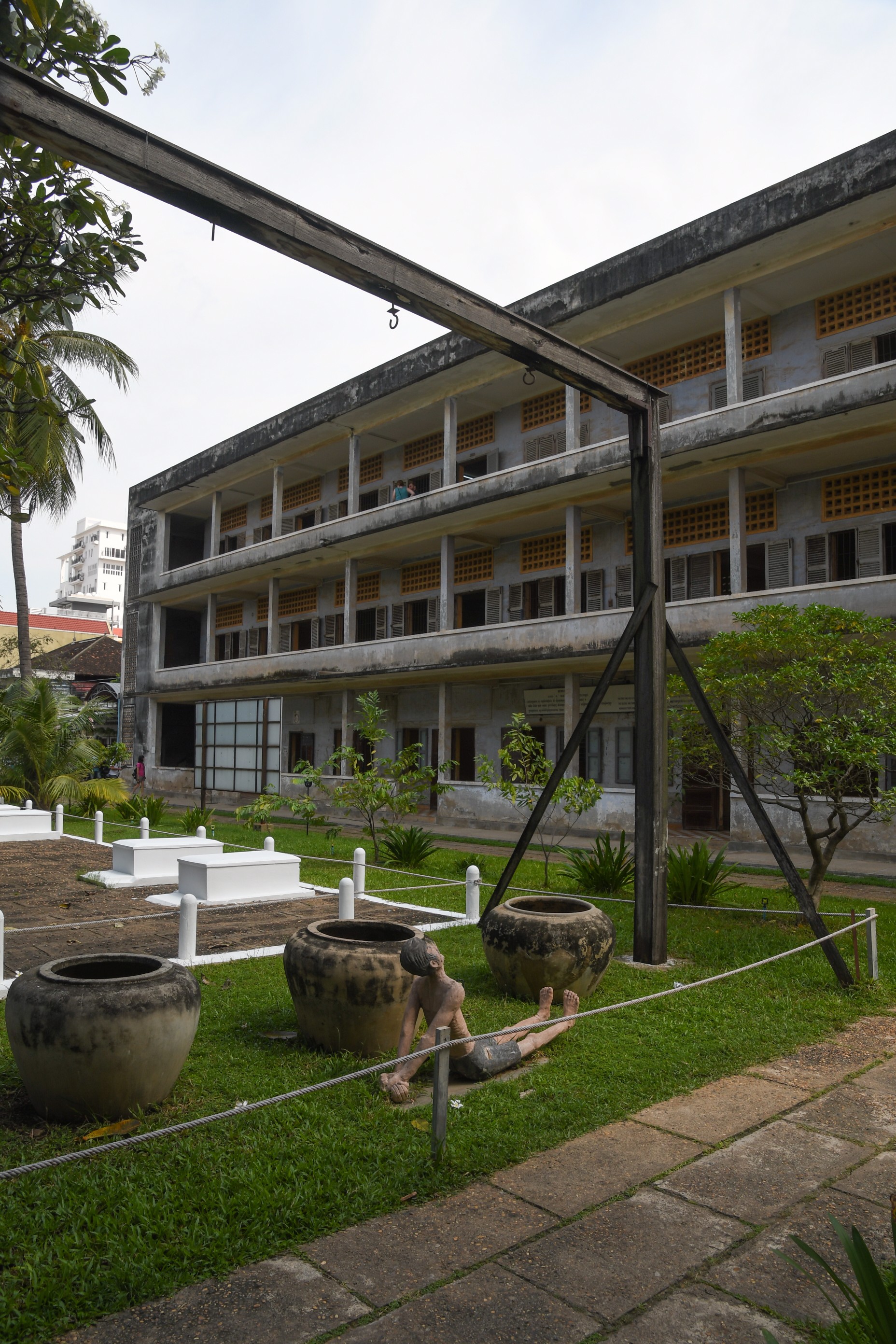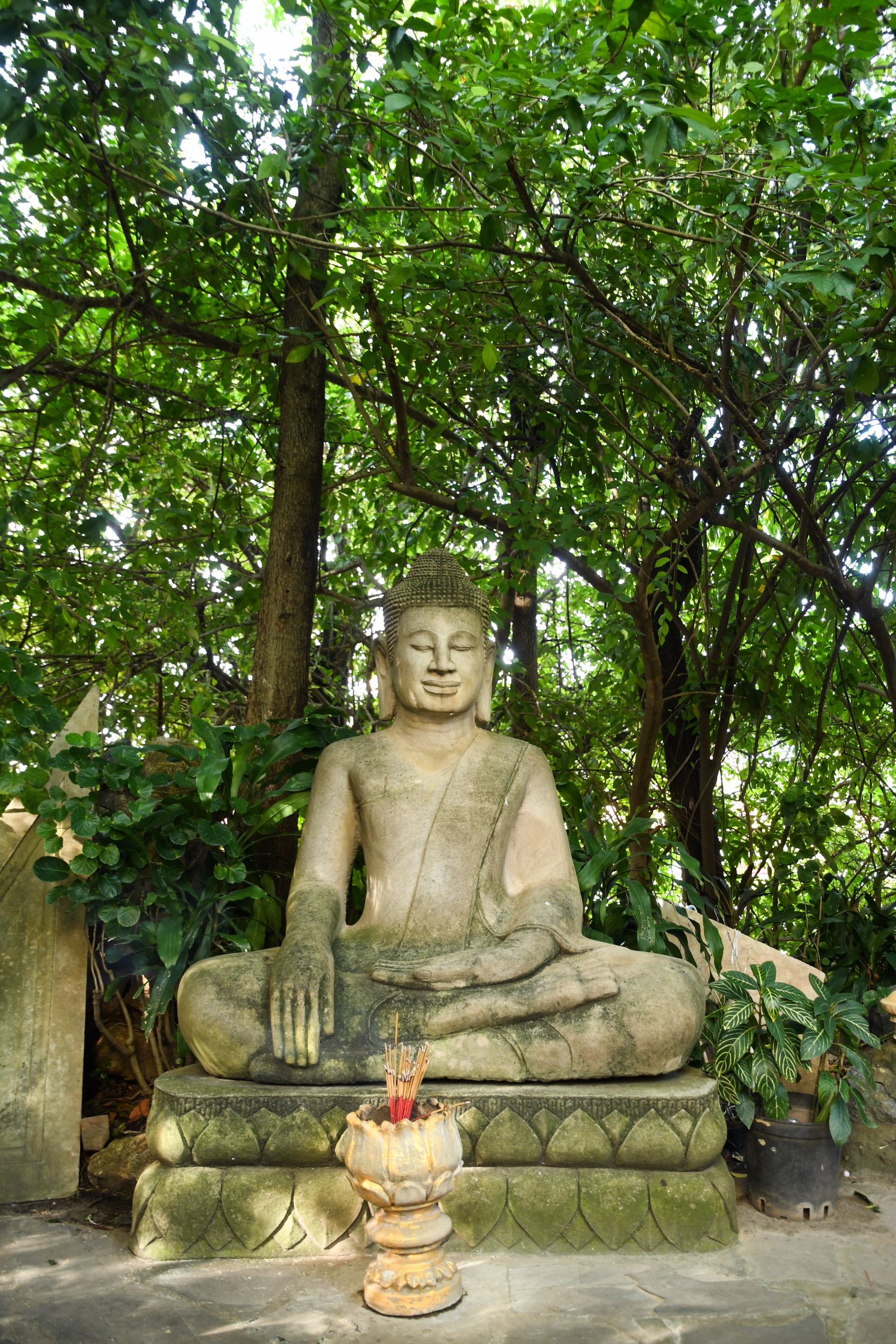Phnom Penh & The Killing Fields | Cambodia
/People often say a place can have a feeling, a vibe to it, whether good or bad, that radiates from it. It is as if the land is trying to tell its story for the visitor, explain what has happened in the past. For me, that is what best describes Cambodia. Underneath the emerging, bustling cities & obvious strides of growth in the last decades, you can still feel a part of the country that hasn't healed, feels restless & not yet at peace.
What we knew of Cambodia & Phnom Penh was, unfortunately, what so many people have come to know - the spillover of the Vietnam War, the rise of the Khmer Rouge, Pol Pot & the horrific genocide in the 70’s.
Cambodia National Museum
The Killing Fields & S21
I am sorry to say that visiting one of these sites & hearing the stories was not something that is new to us. For genocide to be a rather “rare” occurrence, by now we’ve seen the results of it enough times from Bosnia, Poland & others to know history repeats itself far too regularly.
Choeung Ek, the extermination camp now better known simply as the “Killing Fields”, has managed to be one of the best memorials to these types of atrocities in my opinion. It’s difficult to talk about such an experience in a positive light, saying how “well done” & “enjoyable” it was when the topic is so grim. But in all truth, that's the best way we can describe it. They have managed to work out a very personalized, introspective experience with an audio guide that leads you through all the stops in detail & shares personal stories from victims’ families or the few survivors.

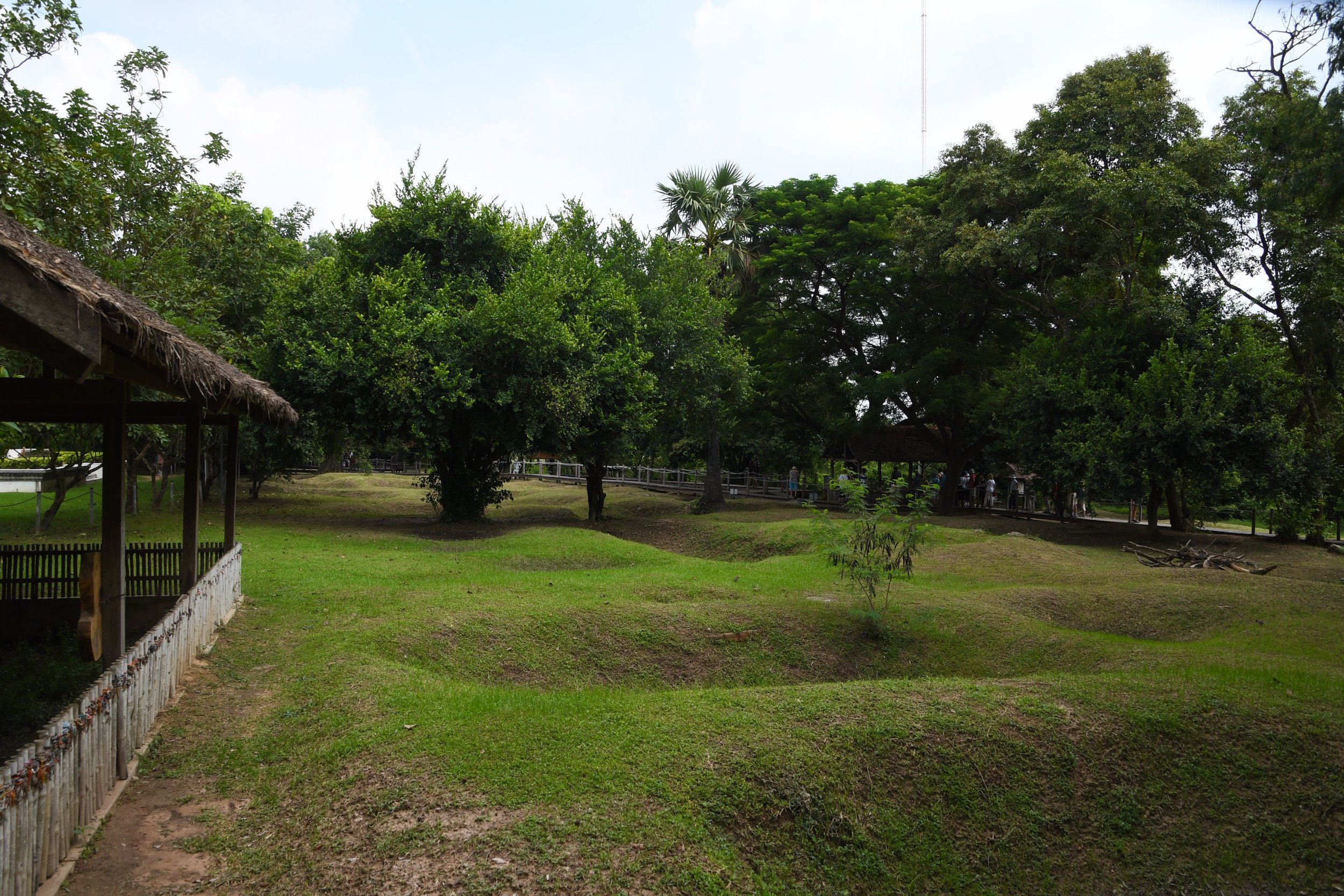

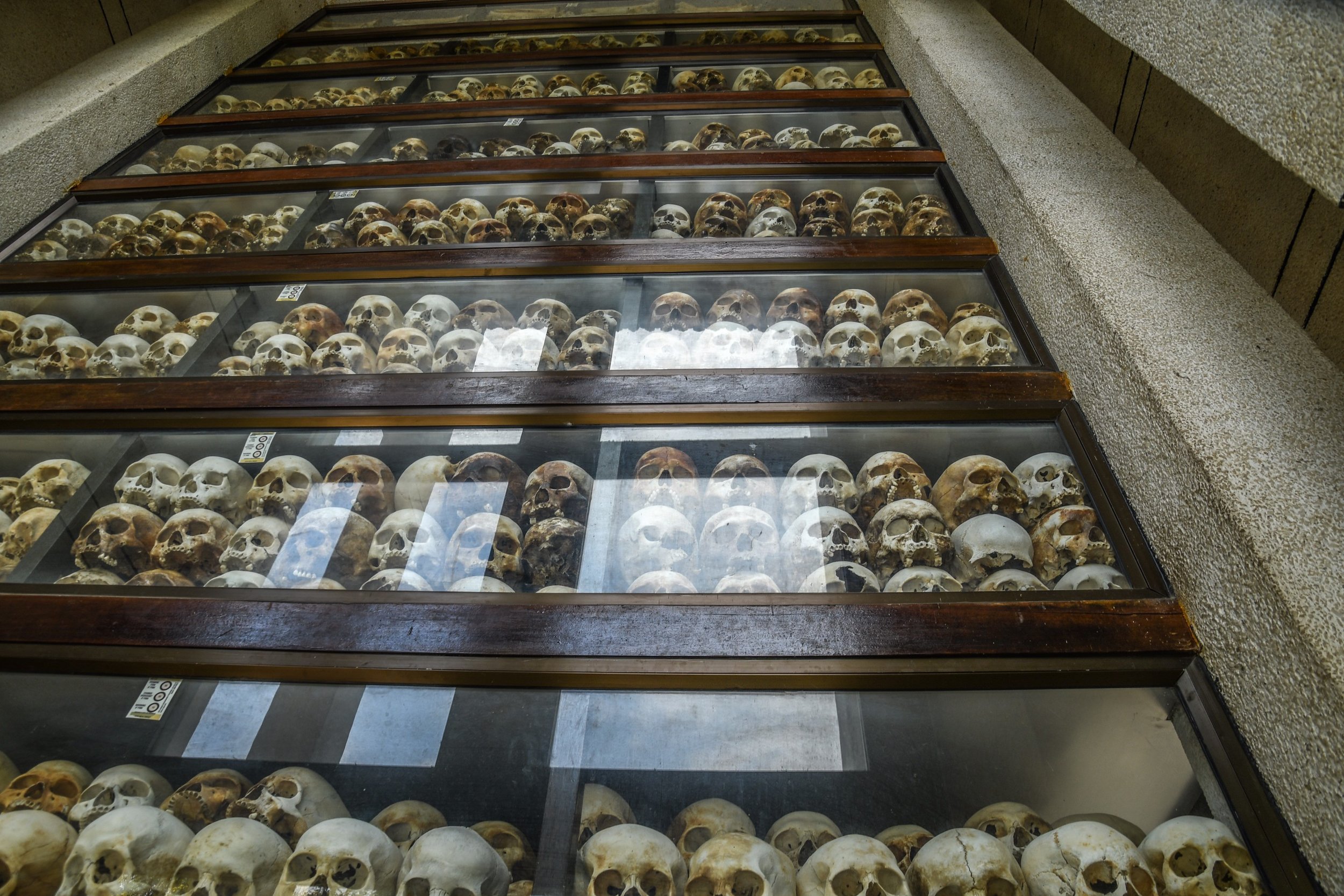
The memorial stupa in the center serves as the final resting place of thousands of human remains uncovered from the site. To this day, 40+ years later, more bones are being unearthed after every rainy season. There are not words to describe the immediate reaction I had to walking along the path & suddenly realizing I was staring at recently uncovered bones just lying in the dirt. Human bones, brought to light from the recent rains sat only a foot or so from where I stood. It was gut wrenching. Every few months, the memorial caretakers collect the new remains, study & preserve them & then they are added to the stupa.
Possibly the hardest site we’ve seen on our entire trip was walking up to the “killing tree”; to save precious bullets, the Khmer Rouge executed children by smashing them against the tree, then tossing their bodies into a mass pit alongside many of the bodies of their mothers & other women.
Killing Tree
S21 had simply been a local high school before the Khmer Rouge took over, turning it into the notorious secret prison & execution center. You can spend hours walking its eerily cold, haunting dark halls, starring at the photos of “prisoners”. If we’ve been anywhere in this world where the dead still reside, it is certainly Tuol Sleng Genocide Center. You can feel the restless souls of those who still seek justice for their deaths.


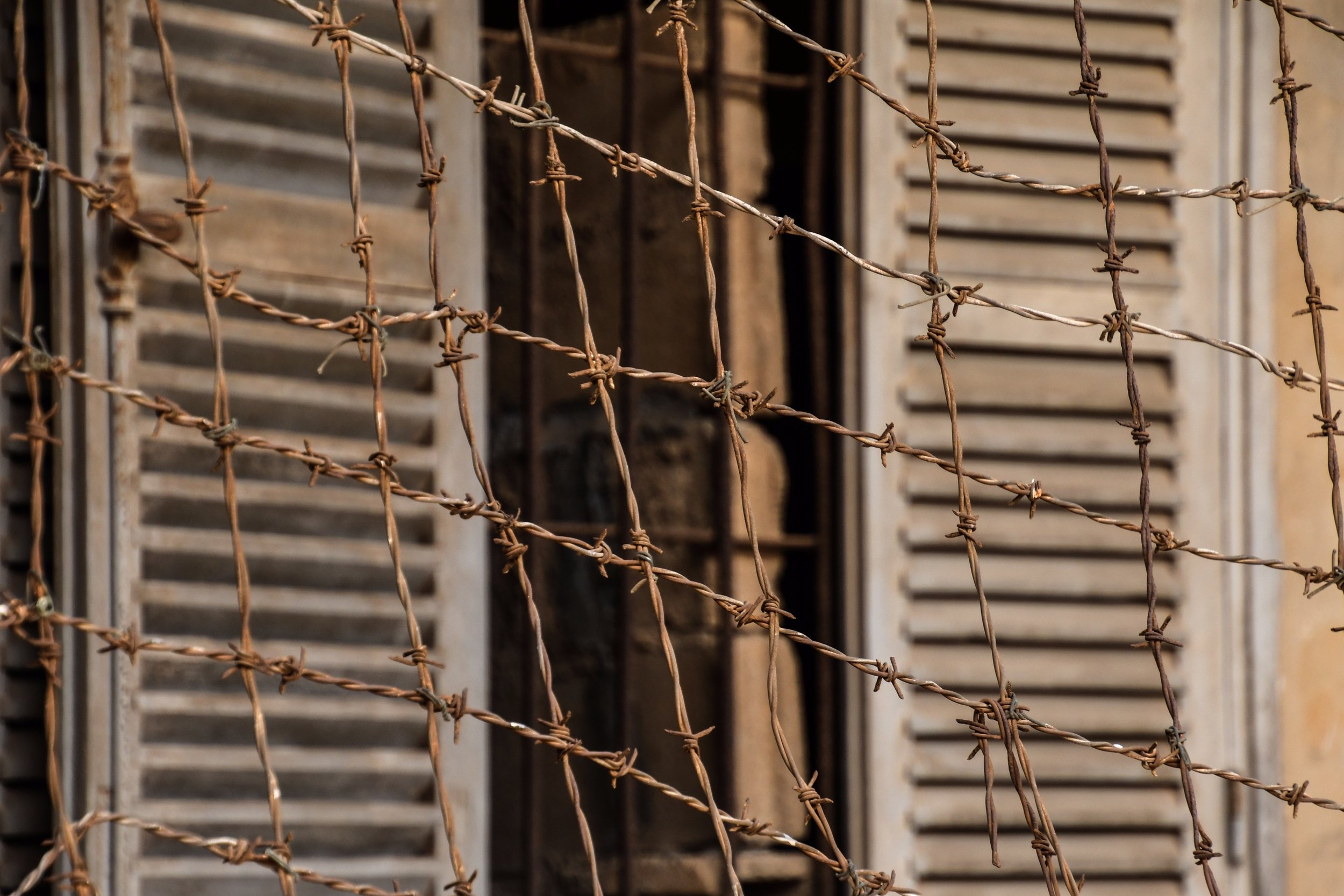
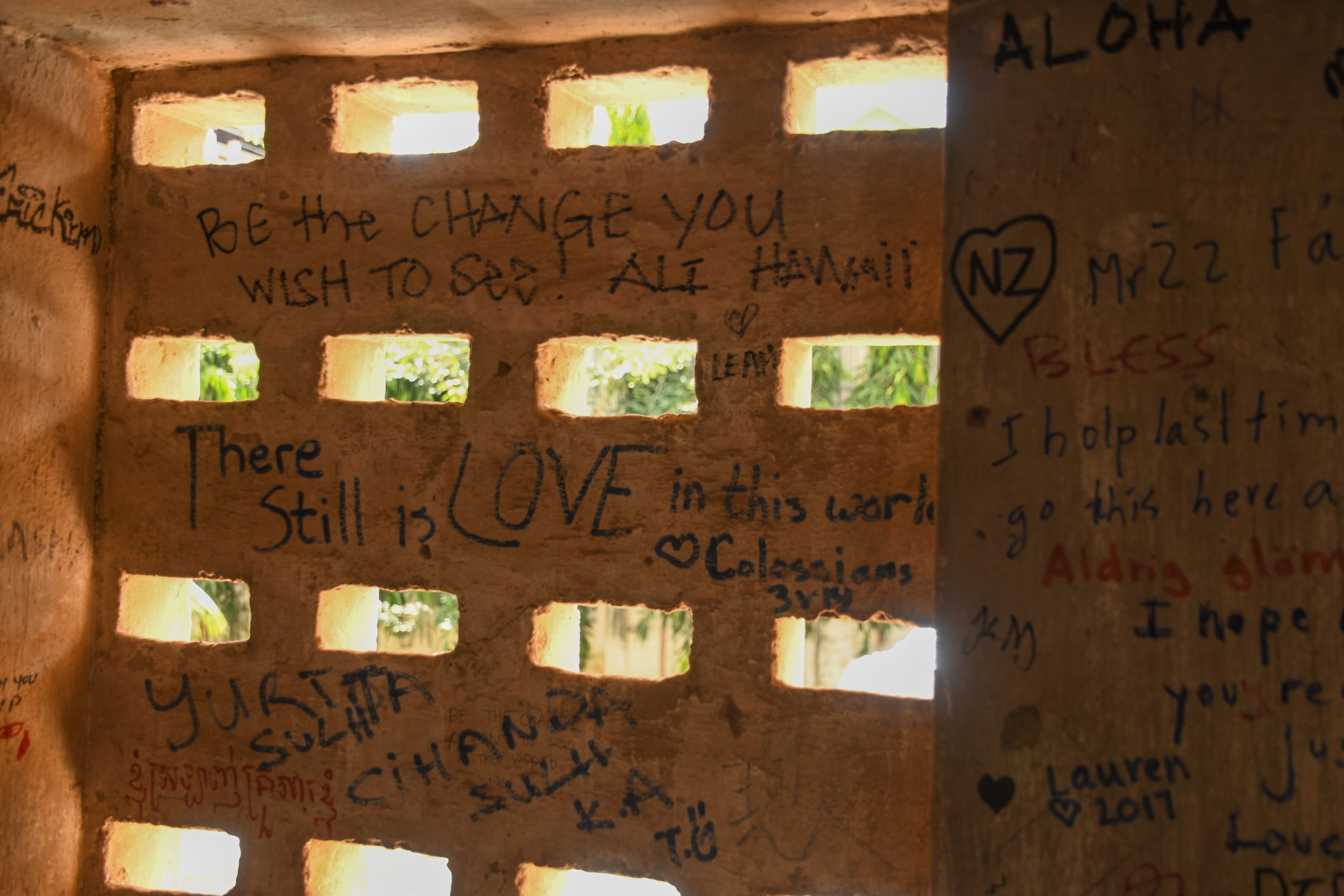
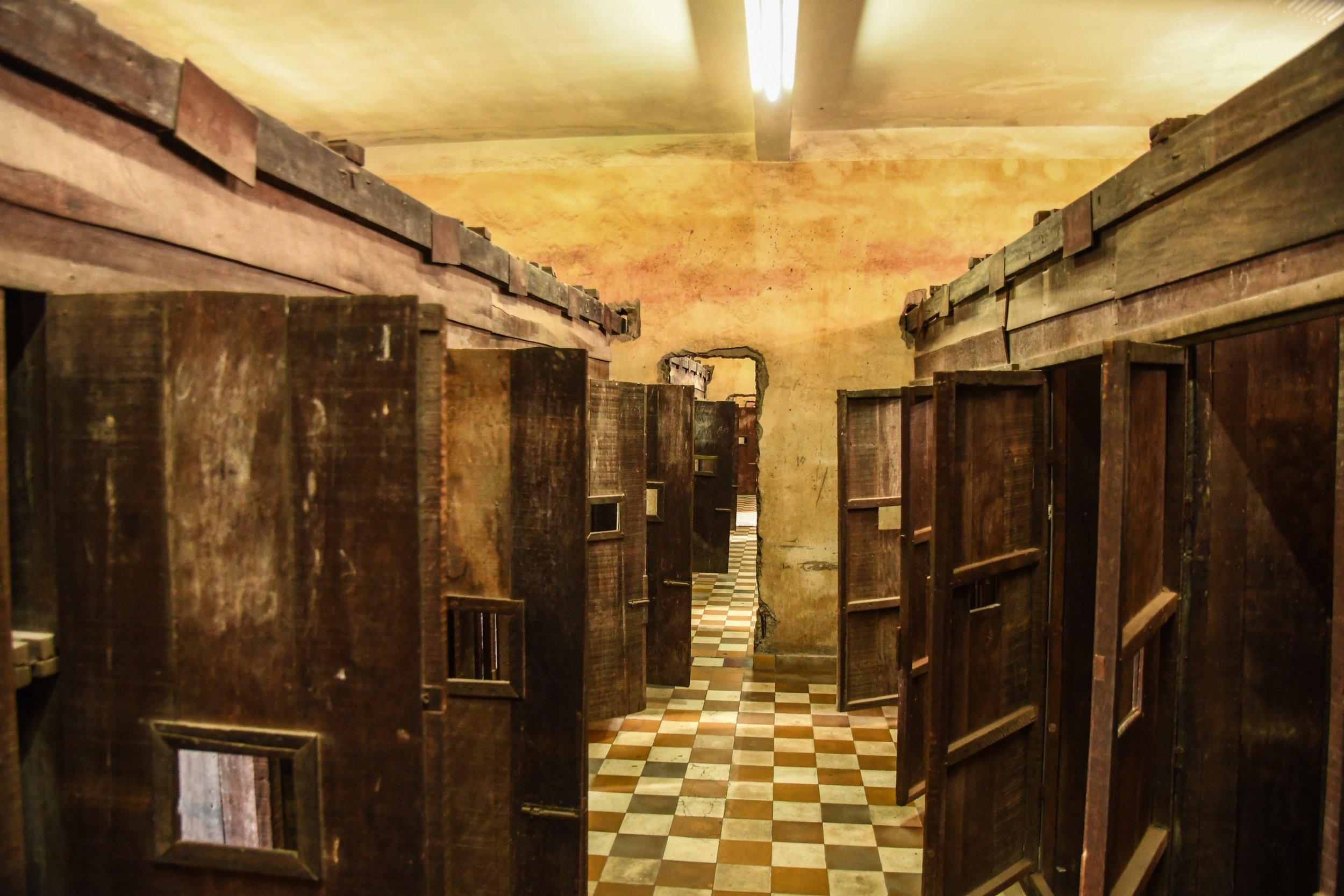
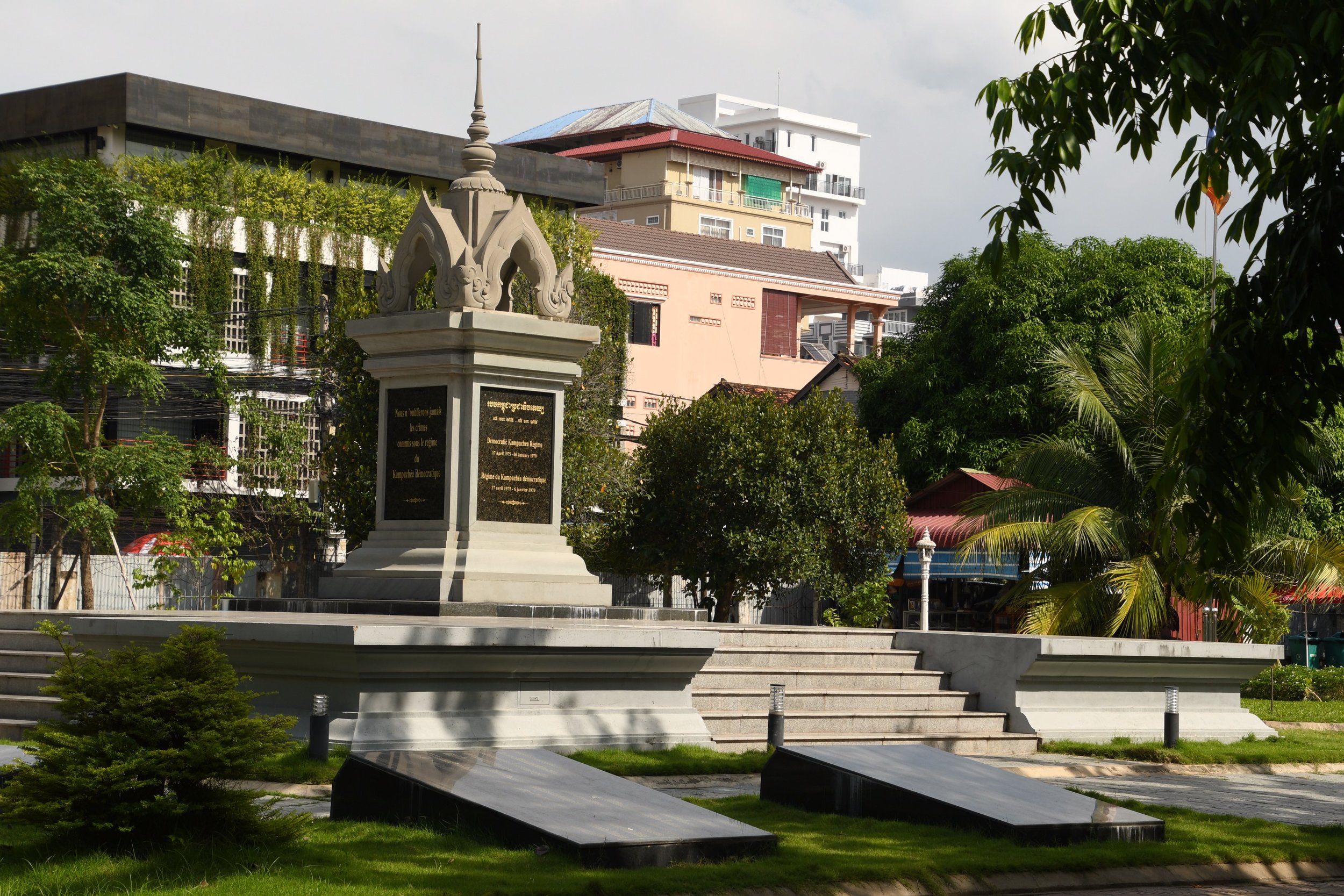
Phnom Penh City
The capital itself is a nice city, larger than we expected, but perhaps not all that exciting. After an unnecessary number of hours waiting in traffic out of Ho Chi Minh & navigating a rather odd border crossing (if you can fly then just do that), we finally arrived.
Immediately, it was not what we had expected, the city was far more built up than we had heard it would be. Don’t get me wrong, if you haven't done much traveling in the region the city wouldn't look like anything special, but we were shocked at the large, high-rise hotels going in across the river & the presence of so many tourists about to embark on a number of river cruises.
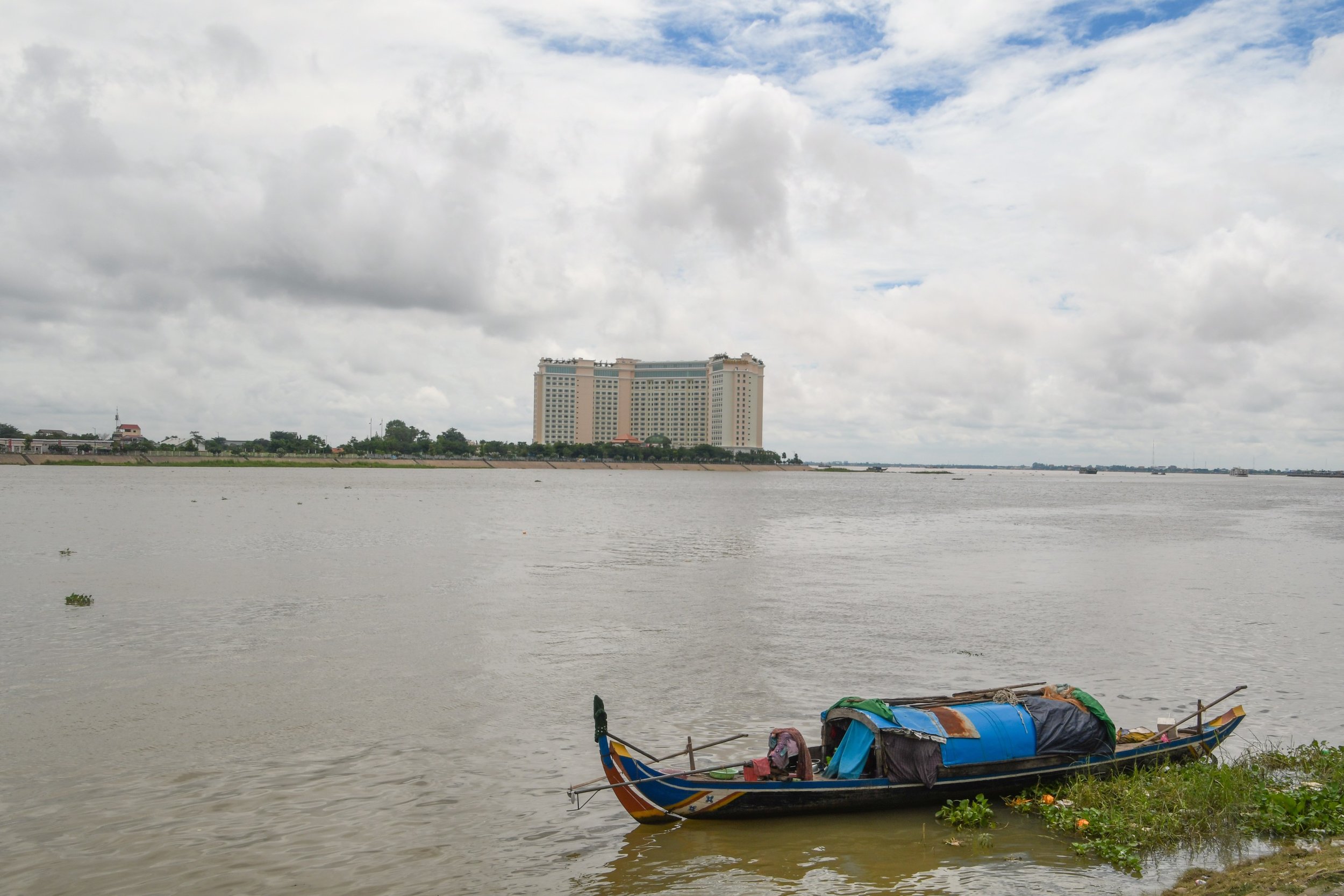
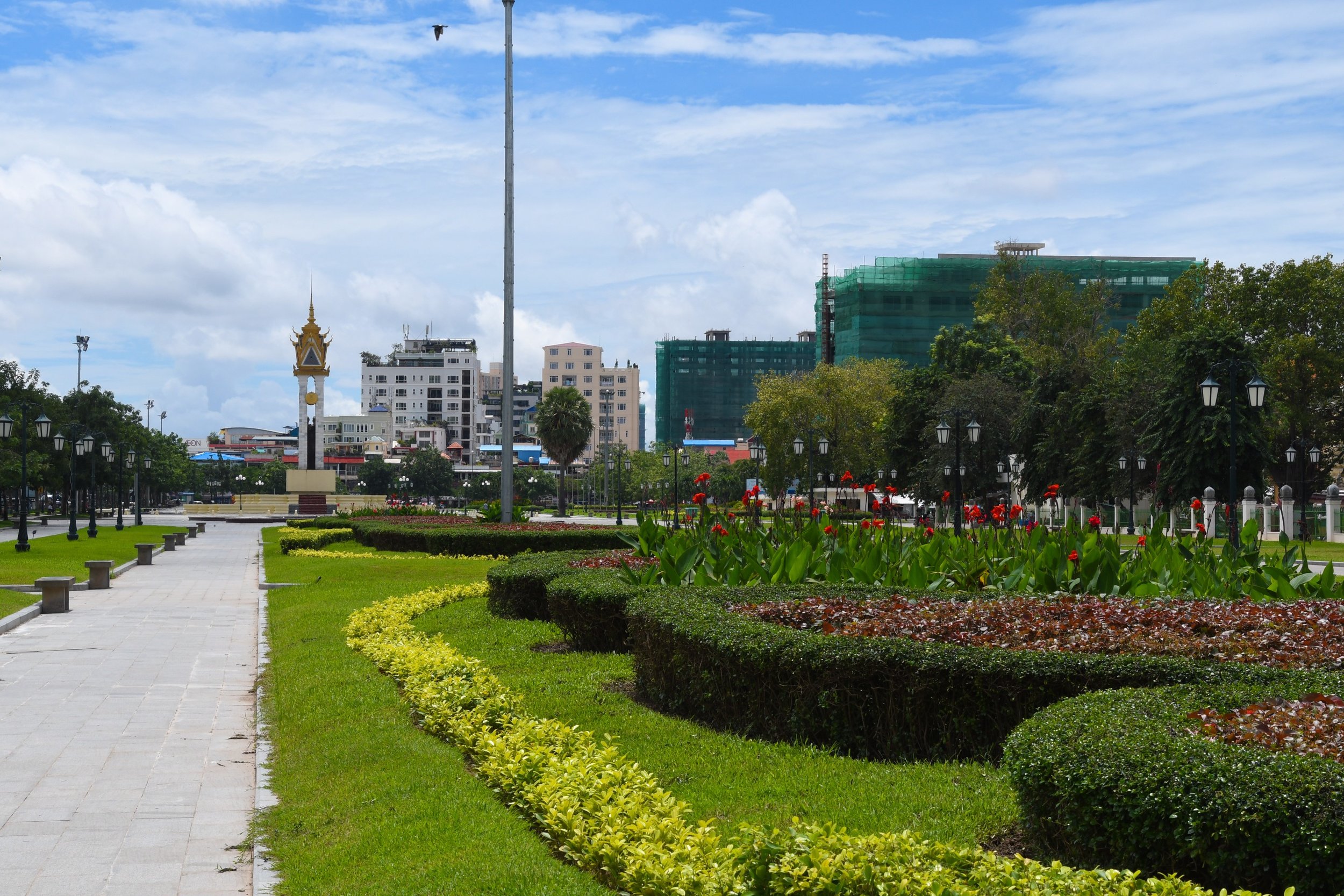
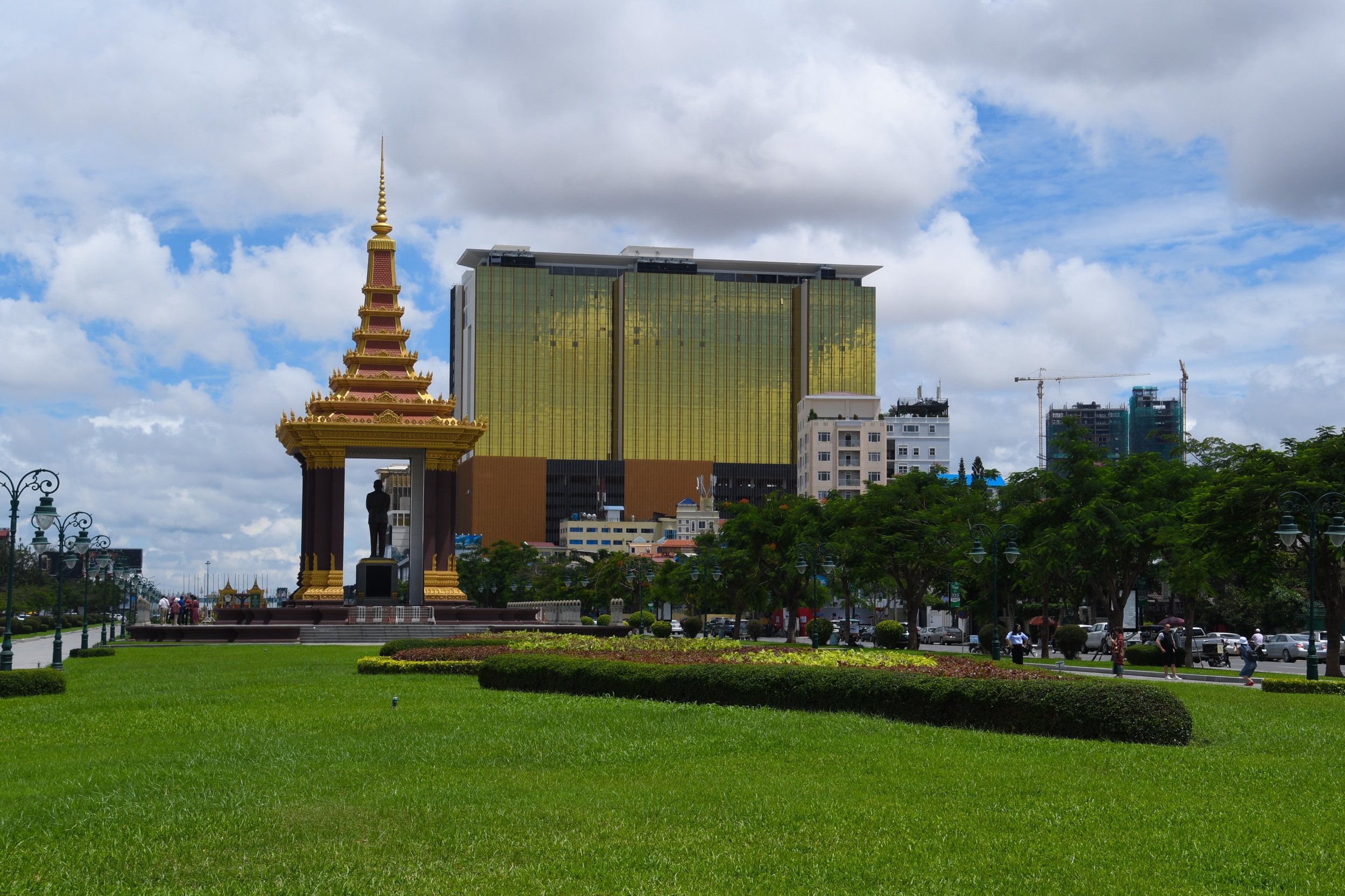
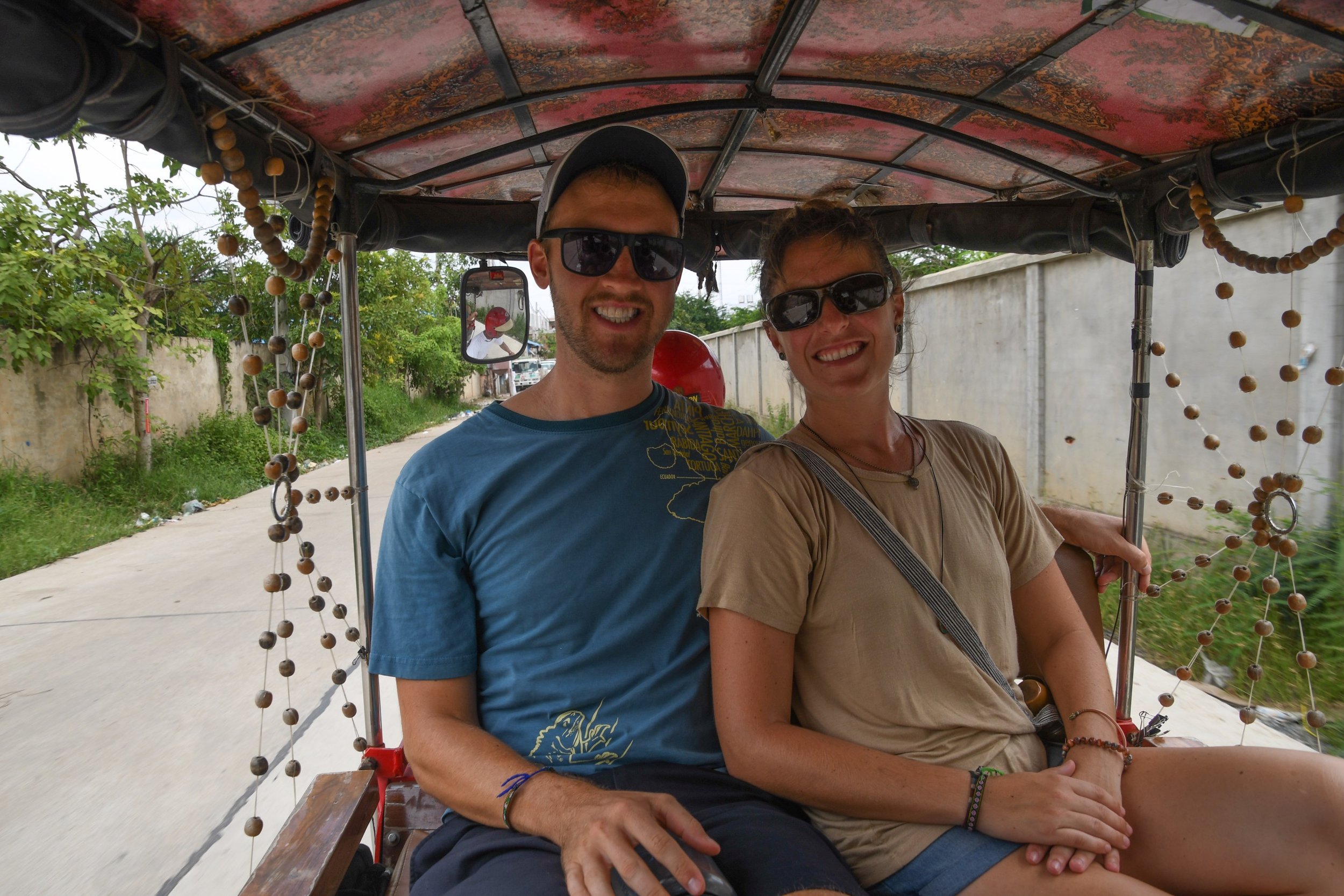
Oddly, Mexican-style food seemed big, & various restaurants offered a mix of Khmer & Mexican dishes. We promptly sat down for 2 proper margaritas. A local store looking oddly like a “7-Eleven” sold everything from Hamburger Helper, Mission tortilla chips & actual Heinz ketchup. It may be one of the only places we’ve seen most of these brands available in a local market.
If you find yourself in town & in need of beverage, there are no shortage of options, but you cannot miss popping into the famous Foreign Correspondents Club (FCC), made famous by the foreign reporters who camped out there reporting on the Vietnam War. You’ll find no shortage of expats there for a stiff drink & a great view over the river.
Thankfully, many of the temples & palace grounds survived the Khmer Rouge reign & are still beautiful sites to visit on a day of sightseeing around the capital.
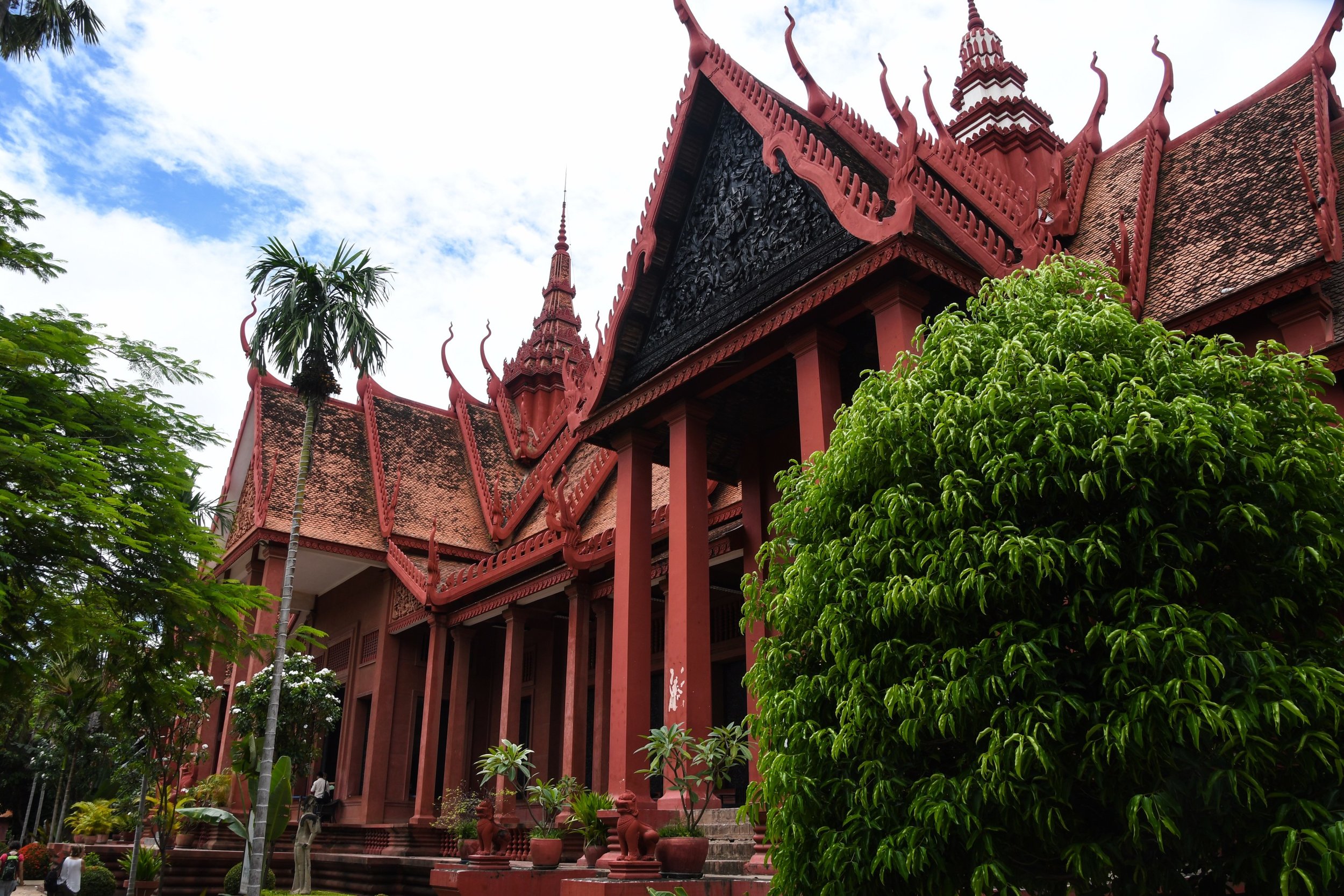
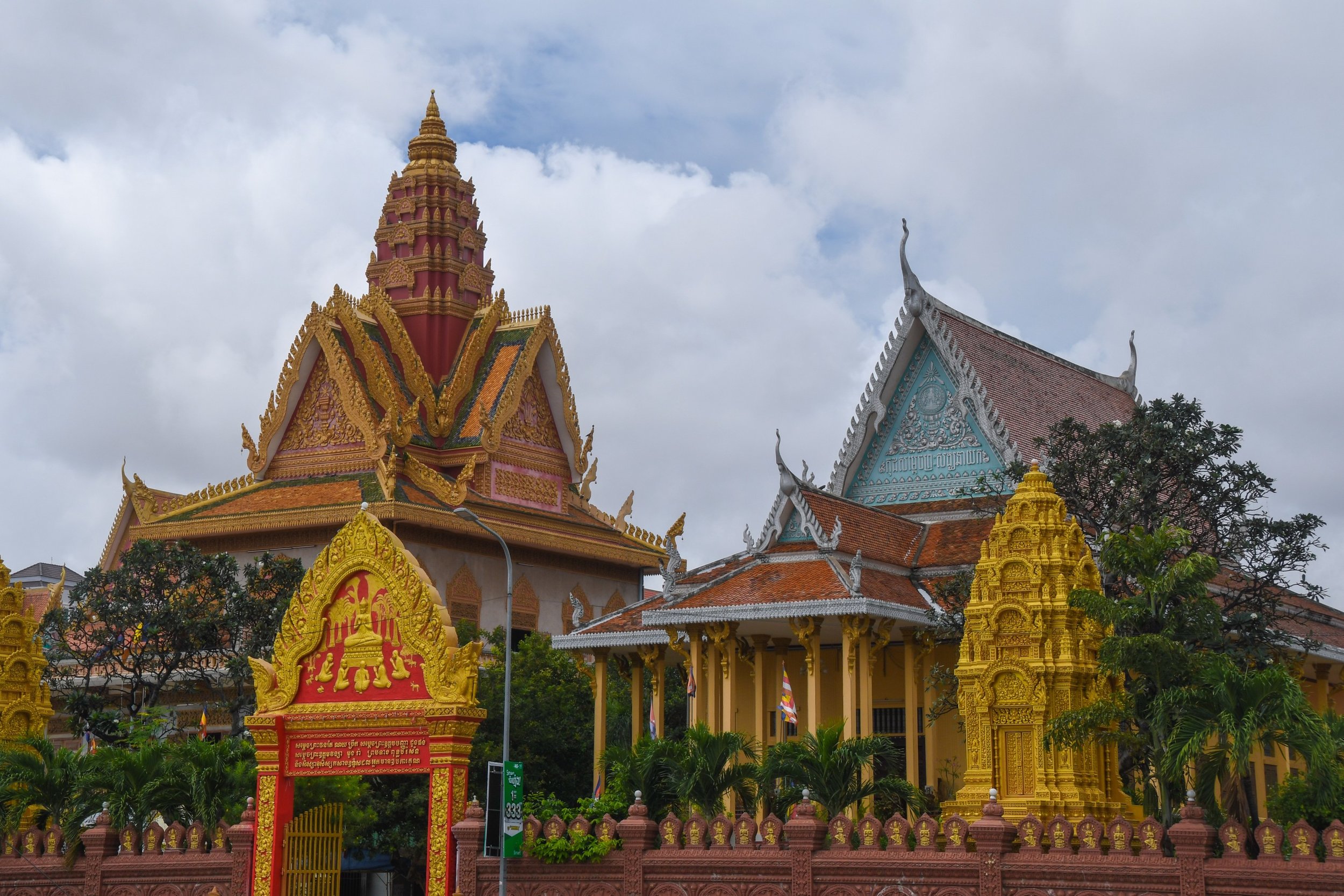

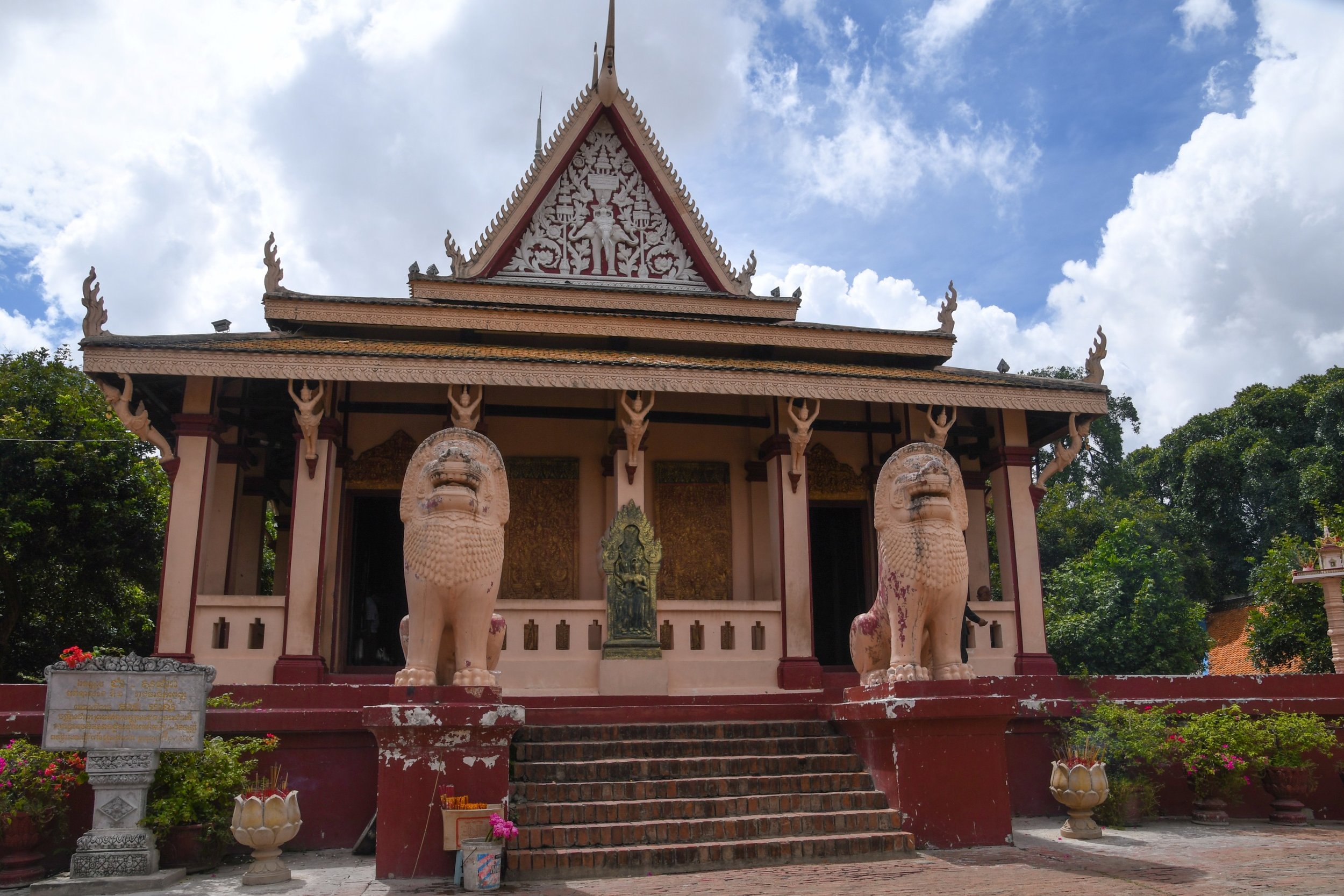
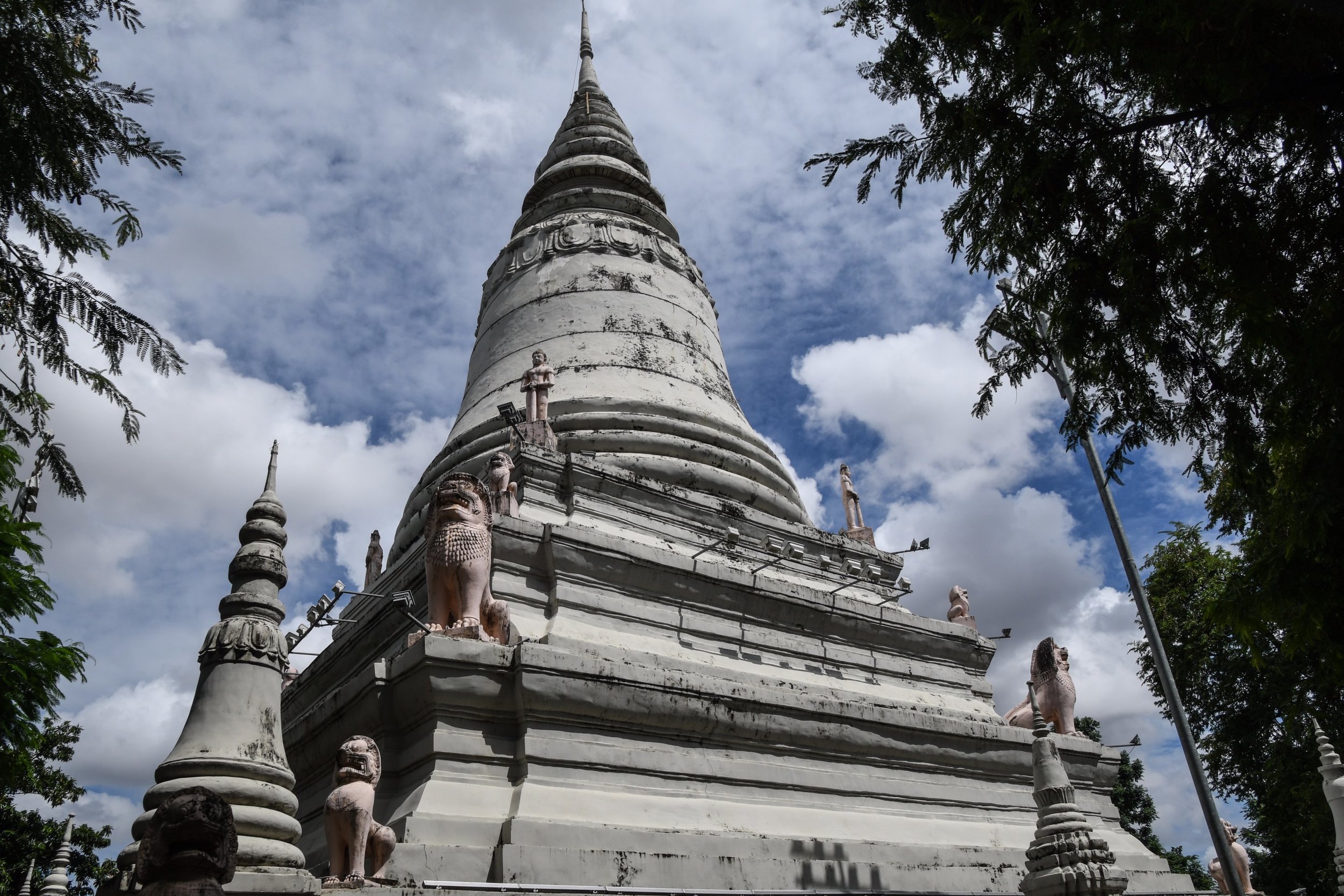
While it may be a bit pricey to get in ($10/person), the Silver Pagoda & Royal Palace are impressive pieces of architecture to witness & walk around.
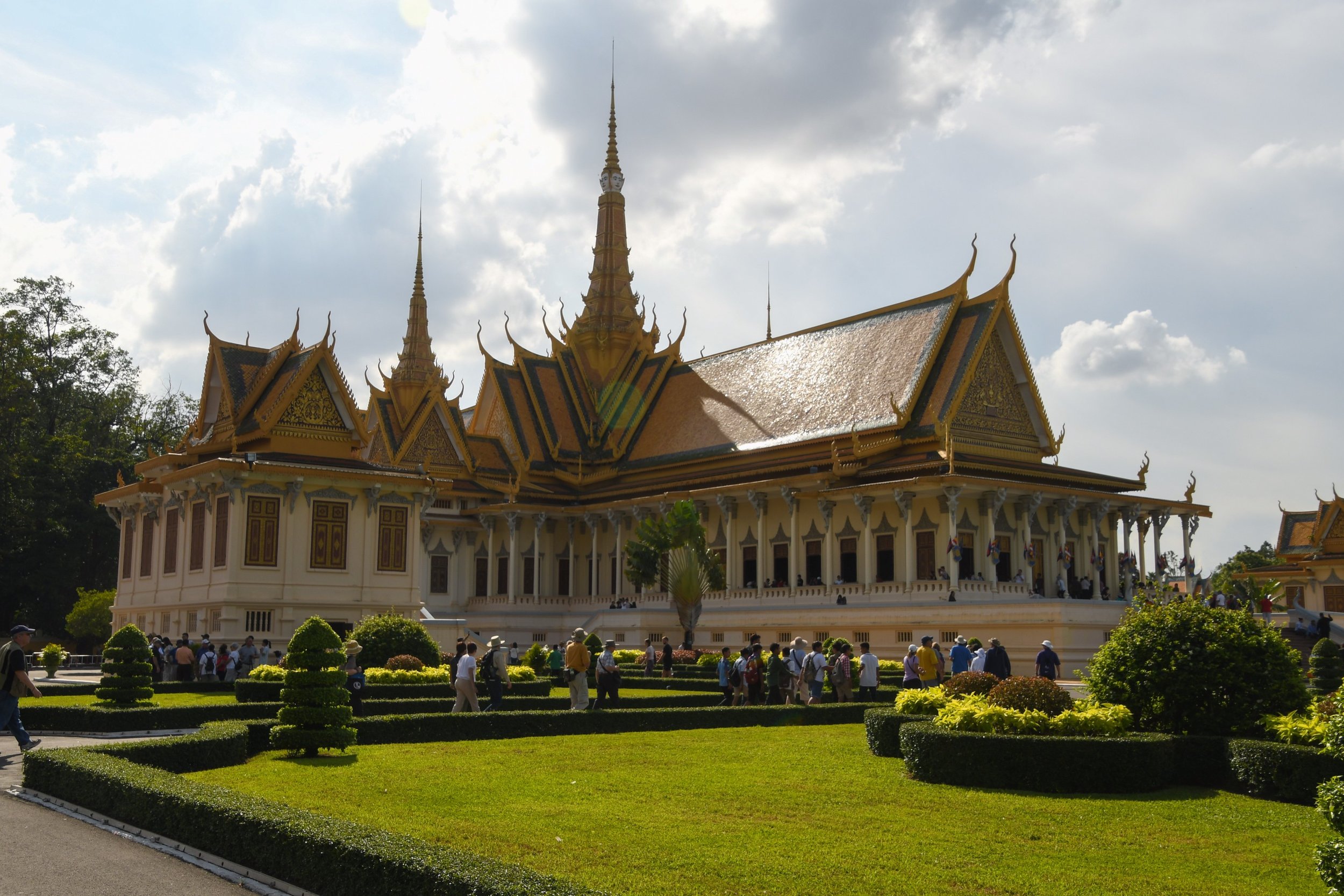
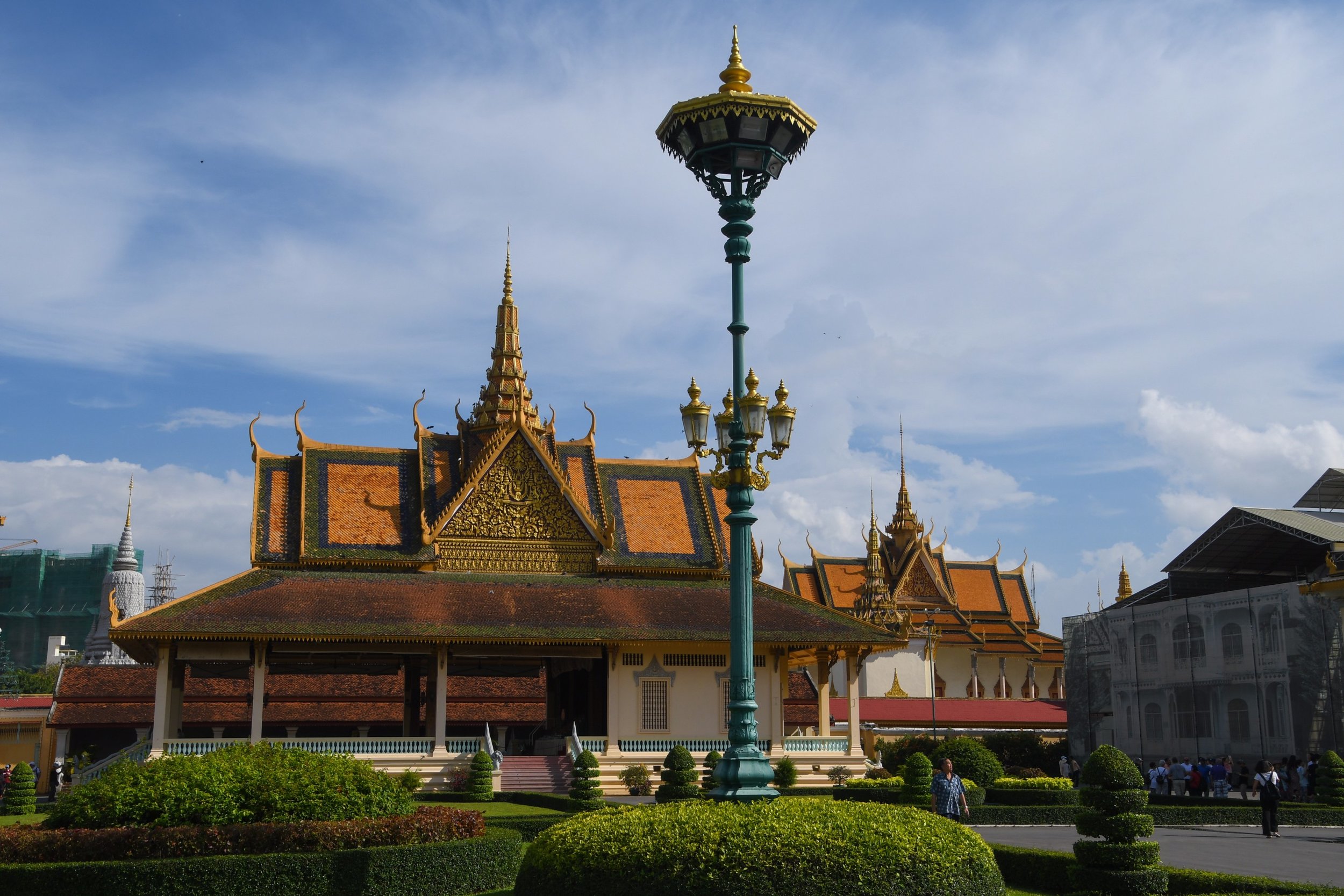
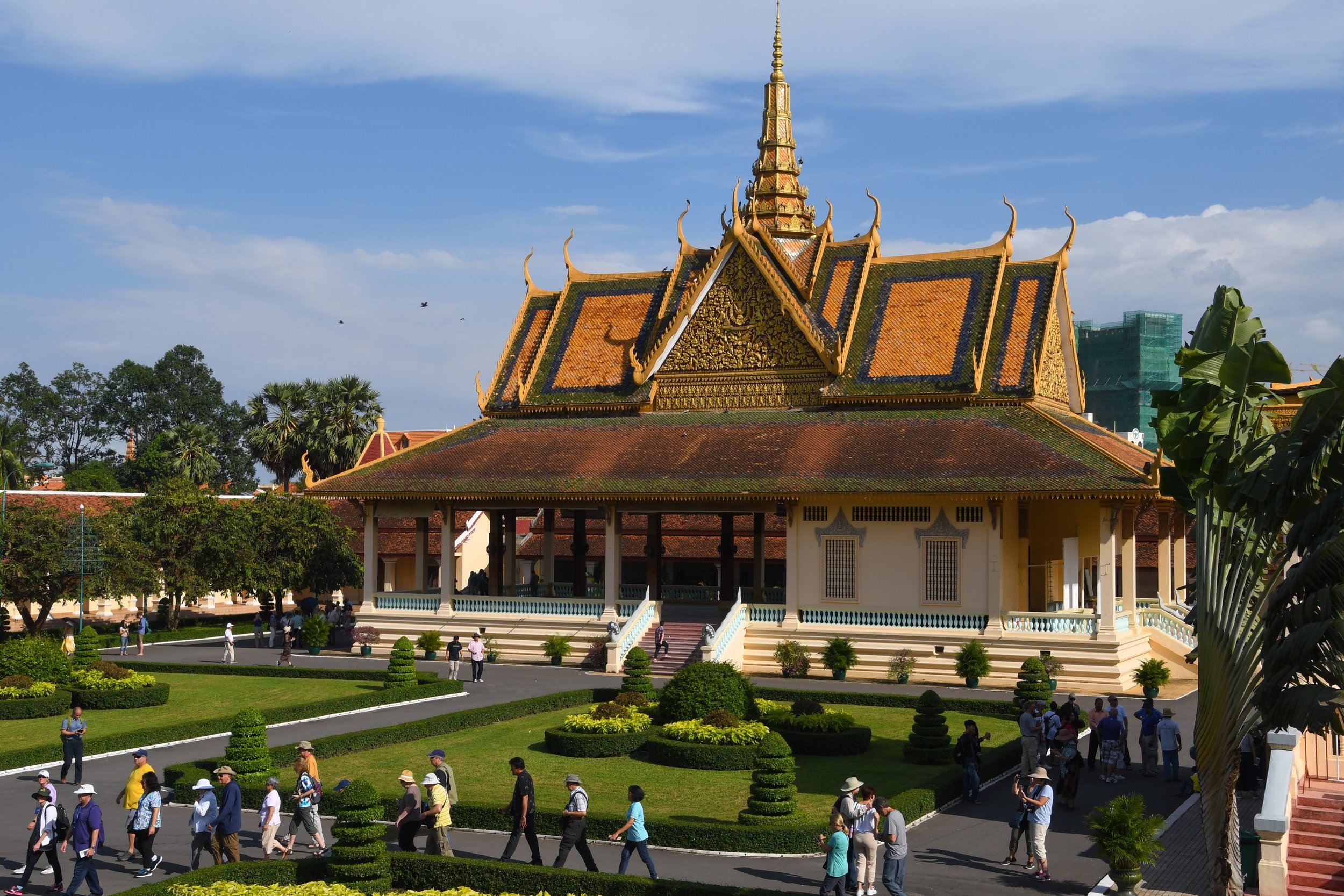
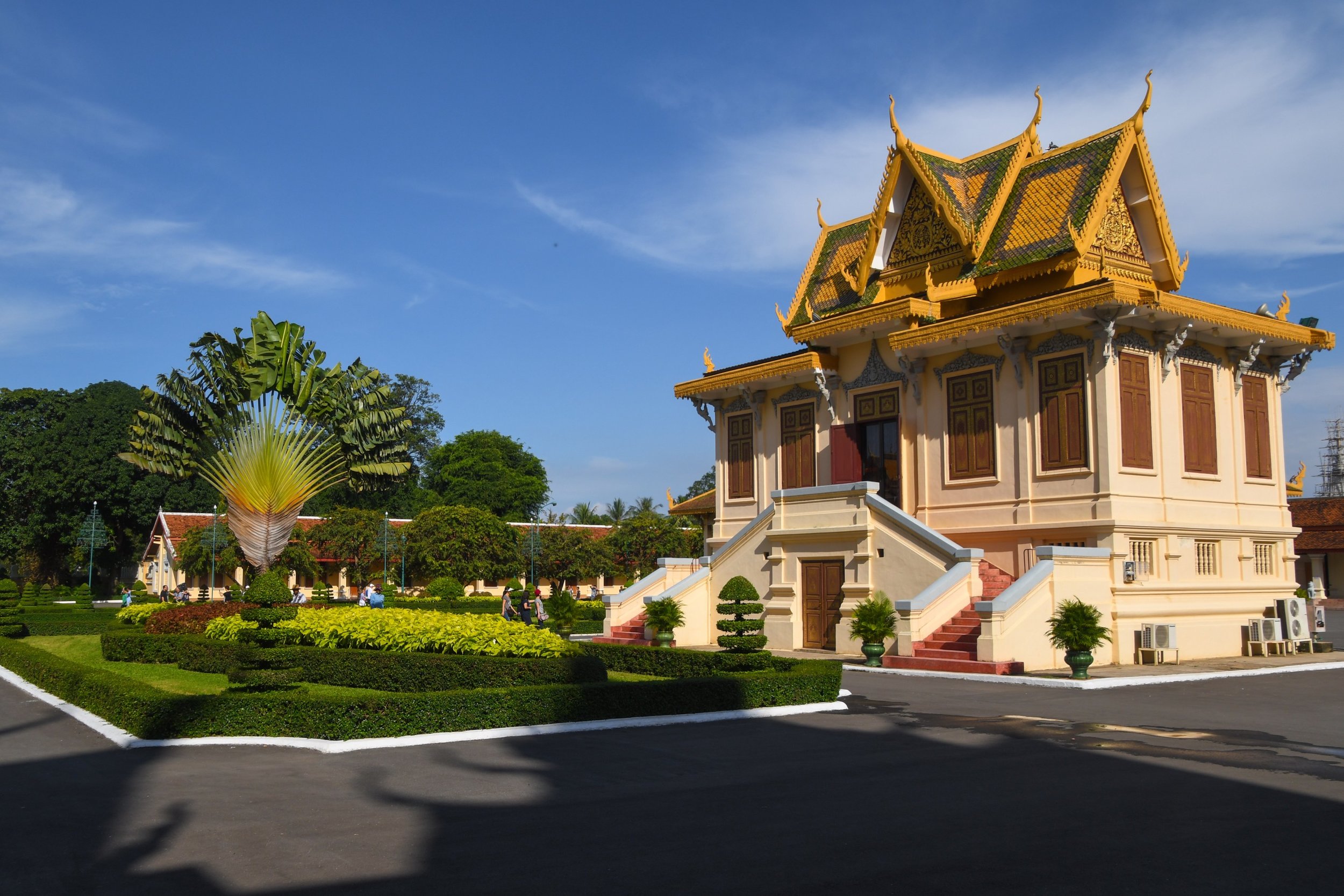

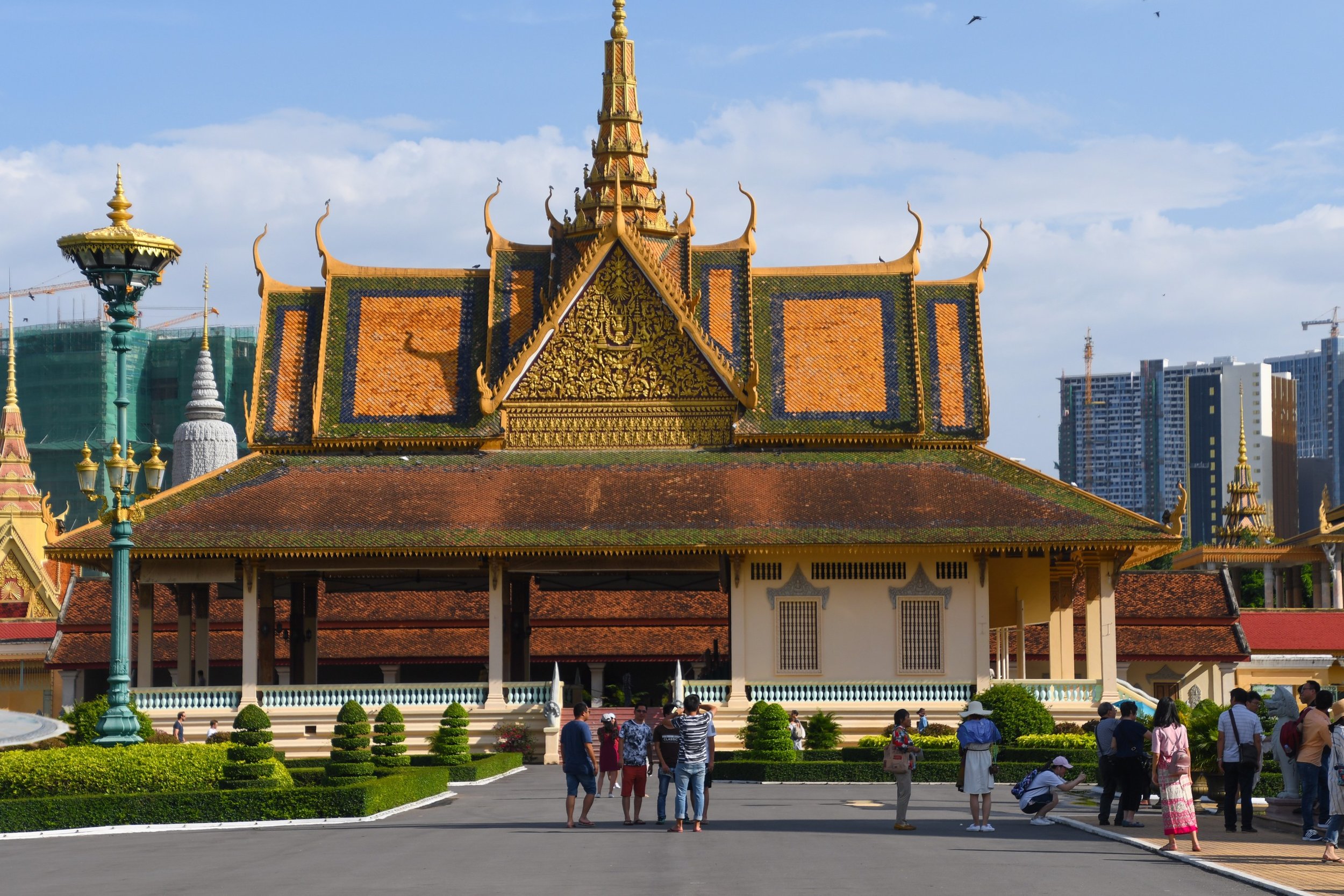


We’d like to believe violence like this could never happen again, that we’ve grown wiser, kinder & more aware of occurring crimes against humanity, but unfortunately, it always seems to continue. If you are interested in learning more from stories of survivors, I highly recommend books such as “First They Killed My Father” (now a movie) & “When Broken Glass Floats”. The stories kept me up at night, ensuring I didn't get a single restful night’s sleep while we were there.
Srebrenica Genocide Exhibition - Sarajevo, Bosnia & Herzegovina
Cambodia is a beautiful country & the people of Phnom Penh were incredibly welcoming. The survivors of the Khmer Rouge are still fighting to ensure their stories are not forgotten, they hope the world will remember what happened here & those that persevered. I hope one day the country can feel at peace again, put their past behind them & move forward. Cambodia is such a beautiful place, it would be a shame not to.





